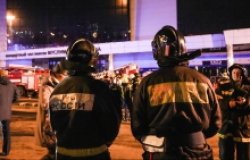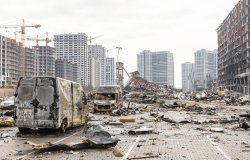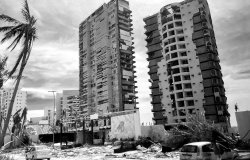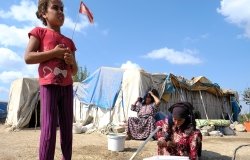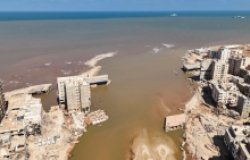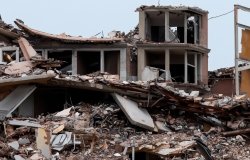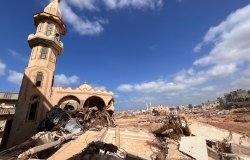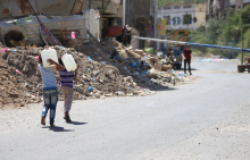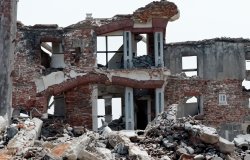Beyond the Rubble: Turkey's Recovery Path One Year After the Quake
One year after the earthquake in Turkey many live in container cities, reflecting insufficient recovery. The disaster claimed over 53,000 lives. With over 14 million affected, less than 10,000 homes built, and survivors grappling with PTSD, the future remains uncertain.
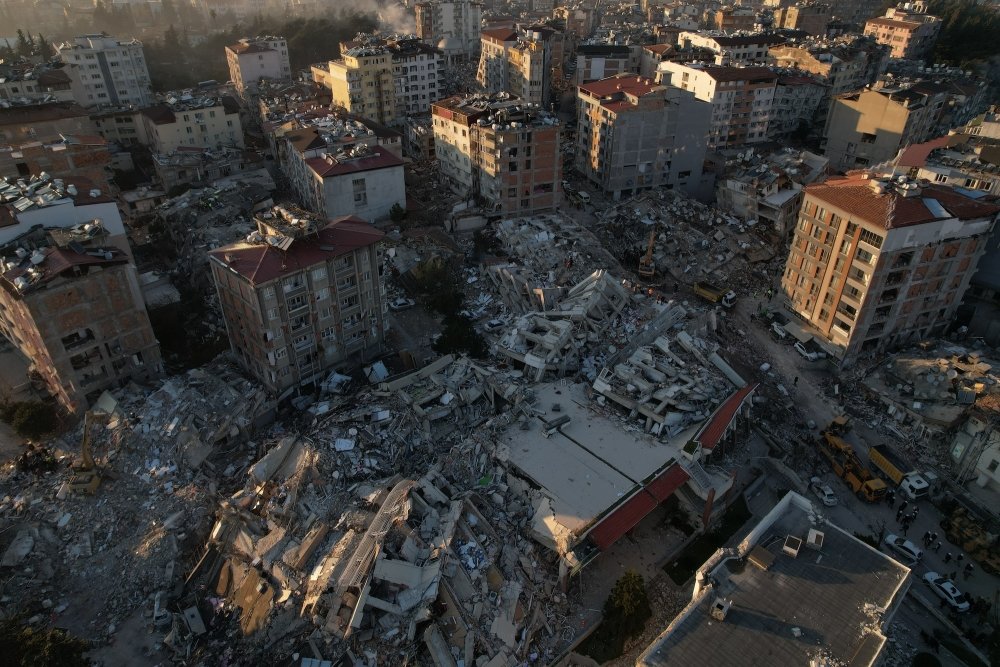
shutterstock.com/ Rumman Production
One year after the 7.8 magnitude earthquake in Turkey on February 6, 2023, Çağla Sağlam, a 28-year-old survivor, holds tightly to a bloodstained piece of cloth. This fabric embodies her final moments with her husband, as she cared for his wounds while he passed away hours after the disaster.
"The initial shock struck at 2:49 a.m. when our roof collapsed on us. My husband was severely injured, and I cradled him in my arms until morning," she recounts.
Amid chaos and with no transportation accessible, Çağla bore her lifeless husband on her back to the nearest medical facility the following day. He was one of over 53,000 people who perished that night in Turkey alone.
With more than 14 million individuals directly affected and less than 10,000 houses build and delivered so far, adequate shelter remains a significant challenge.
Hatay, Çağla's hometown and the hardest-hit, and its central district Antakya, remain largely in ruins today. The only noticeable change is the rubble replacing large swathes of empty land, accompanied by an eerie silence. With more than 14 million individuals directly affected and less than 10,000 houses built and delivered so far, adequate shelter remains a significant challenge.
Hence, like millions of other earthquake survivors, Çağla and her four children, aged 22 months to 8 years old, reside in container cities scattered across southern Turkey, facing uncertainty about moving to a permanent house anytime soon.
Challenges in container cities
The container city Çağla lives in the Kirikhan district of the Hatay province, partially funded by Corus International, a nonprofit based in Washington, D.C., and established by the International Blue Crescent (IBC), is one of many such projects swiftly erected by aid agencies in the aftermath of the earthquake.
Originally conceived as a short-term fix, one year following the earthquake, amidst yet another rainy winter leading to sporadic ground soaking, fresh challenges endure for displaced earthquake survivors.
"The weather and infrastructure-related challenges associated with container housing are merely one aspect of the broader issue," notes Fred McCray, senior director for humanitarian operations at Corus International.
"In many camps, facilities such as showers and, in some cases, toilets are used by both men and women in large numbers, which raises concerns about privacy, consistent sanitation, hygiene, and access to clean water," McCray emphasizes.
McCray's organization incorporated additional relevant services into its priorities to potentially mitigate the spread of infectious diseases, particularly cholera, given its prevalence across the border in Syria.
Emotional recovery support
Another significant challenge is the ongoing battle of survivors with post-traumatic stress disorder (PTSD), arising from the loss of loved ones and the trauma of being trapped under rubble.
Aggravating their anxiety is the uncertainty surrounding their future, including housing, lost businesses, the prolonged closure of schools, and a lack of sustained employment opportunities. For instance, Çağla Sağlam still finds it difficult to experience joy in simple activities like laughter. Having seemingly let go of any aspirations for the future, she confides, "My only solace is found at the grave of my husband," a place she visits daily for peace of mind.
Though small in comparison to the enormity of such challenges, Corus International, in partnership with The Young Life Foundation, is supporting children and women-friendly spaces in Antakya city, Hatay province.
These spaces, equipped with on-site counselors, serve as safe havens for survivors to express themselves and engage in activities to enhance their emotional well-being.
The children-friendly spaces offer educational programs such as coding and robotics, while the women's centers provide community building and address female hygiene needs, nail and hair services—small yet invaluable amenities essential for fostering a sense of normalcy.
The long road ahead
As earthquake survivors enter their second year, a significant portion of the 14 million affected population continues to depend on varying degrees of external assistance.
Furthermore, with fewer than 10,000 houses constructed and delivered thus far and considering the temporary nature of container cities, the housing situation continues to pose a significant long-term challenge.
Moreover, despite schools officially reopening in the affected regions, the sustainability of regular schooling remains challenging due to inadequate infrastructure and a scarcity of safe buildings. This leads to overcrowded classrooms where schools are open.
Consequently, experts warn of increased risks such as child labor, early marriages, and domestic violence in this environment.
Additionally, ongoing business closures and limited job opportunities for parents exacerbate the challenge of affording expenses related to sending children to distant schools. Consequently, experts warn of increased risks such as child labor, early marriages, and domestic violence in this environment.
Consequently, families like Çağla’s continue to face a tenuous future in the face of outside assistance coming up far short of needs even a year later.
The views expressed in this article are those of the author and do not express the official position of the Wilson Center.
About the Author

Muhammad Tahir

Middle East Program
The Wilson Center’s Middle East Program serves as a crucial resource for the policymaking community and beyond, providing analyses and research that helps inform US foreign policymaking, stimulates public debate, and expands knowledge about issues in the wider Middle East and North Africa (MENA) region. Read more
